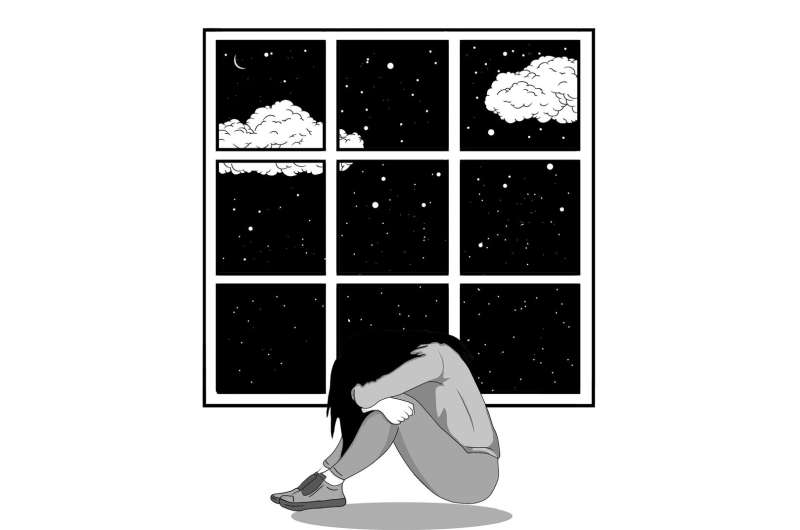This article has been reviewed according to Science X's editorial process and policies. Editors have highlighted the following attributes while ensuring the content's credibility:
fact-checked
peer-reviewed publication
trusted source
proofread
Identifying depression, anxiety symptoms prior to puberty in adolescent females

Regardless of age, symptoms of depression and anxiety in adolescent females showed little to no variation prior to their first menstruation, indicating an early screening window prior to puberty, according to a study led by a team of Penn State researchers. They also found that symptoms decrease in severity as more time passes since the first menstruation, again regardless of age.
The researchers reported their findings, concluded from a secondary analysis of data collected for a longitudinal study on multiple factors, in the of Journal of Adolescent Health.
The team said, assuming corroboration of their findings, that screening for depression and anxiety before the onset of menses and interpreting those symptoms relative to time since menarche—in addition to continued screenings—may help clinicians better understand and respond to puberty-related psychopathology.
"Adolescence is such a crucial period to be conducting research that can help us better understand problems like depressive and anxiety symptoms that can impact an individual, families, their communities and even the greater public health," said Lorah Dorn, a professor in the Penn State Ross and Carol Nese College of Nursing and senior author on the study.
"Studying different age groups of girls and following them longitudinally allowed us to talk about how these symptoms may change."
Most studies have used the age at menarche indicator, but time since menarche—or a person's first menstruation—is a novel indicator of pubertal change that increases as adolescents get older. This means researchers can track symptoms in terms of a specific marker instead of age. Using this indicator, the team studied a community sample of 262 adolescent female participants in age cohorts of 11, 13, 15 and 17 years over a four-year period.
The researchers assumed the participants represented normative female adolescent development, which includes exposure to normal environmental challenges, including stress that may result from social changes in school, concerns over national or international affairs and more, so they did not control for such variables.
The participants reported their age at first menstruation and were screened annually for symptoms of depression and anxiety. The depressive symptom assessment included evaluating for feelings of sadness or anger, irritability, and loss of social interest and loneliness. The anxiety symptom assessment included screening for stress, tension or worry, and questions representing absence of anxiety, like feeling secure.
"Comparing the time since menarche indicator to before menarche, we did not see much change in symptoms. We were surprised to see symptoms decrease in the years after menarche," Dorn said. "For some girls, these symptoms may be transitory in parts of puberty."
Although not tested, the researchers said one interpretation may be that as time progresses since menarche, pubertal hormones may regulate and become more stable, indicating that individuals may become less sensitive to the fluctuating hormones.
As they adapt to these hormone changes, they could become more psychologically or socially comfortable with their maturational development and display fewer symptoms of anxiety or depression, indicating that these symptoms may be a result of hormone changes rather than mental health challenges that persist into adulthood.
While additional studies are still needed to investigate time since menarche rather than chronological age as an indicator, the researchers said it may also be a useful tool in considering the impact of physical development and other areas of psychological functioning in adolescent females.
It may also serve as a useful indicator in studying transdiagnostic processes—or the identification of factors or mechanisms across depression and anxiety that increases the risk for having or maintaining either of those disorders.
More information: Zhenyu Z. Zhang et al, The Impact of Time Since Menarche for Depressive and Anxiety Symptom Severity in Adolescence and Young Adulthood, Journal of Adolescent Health (2024). DOI: 10.1016/j.jadohealth.2024.03.010





















